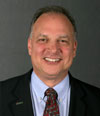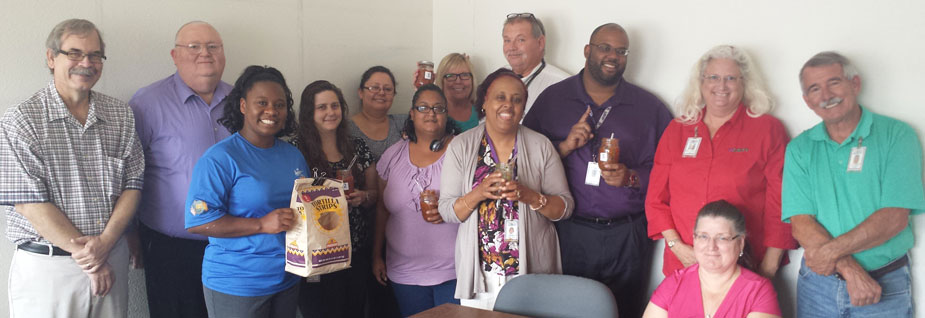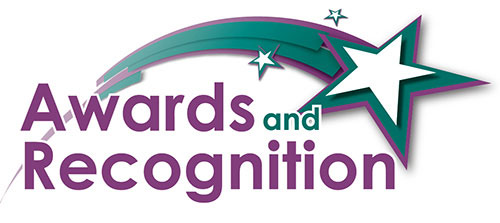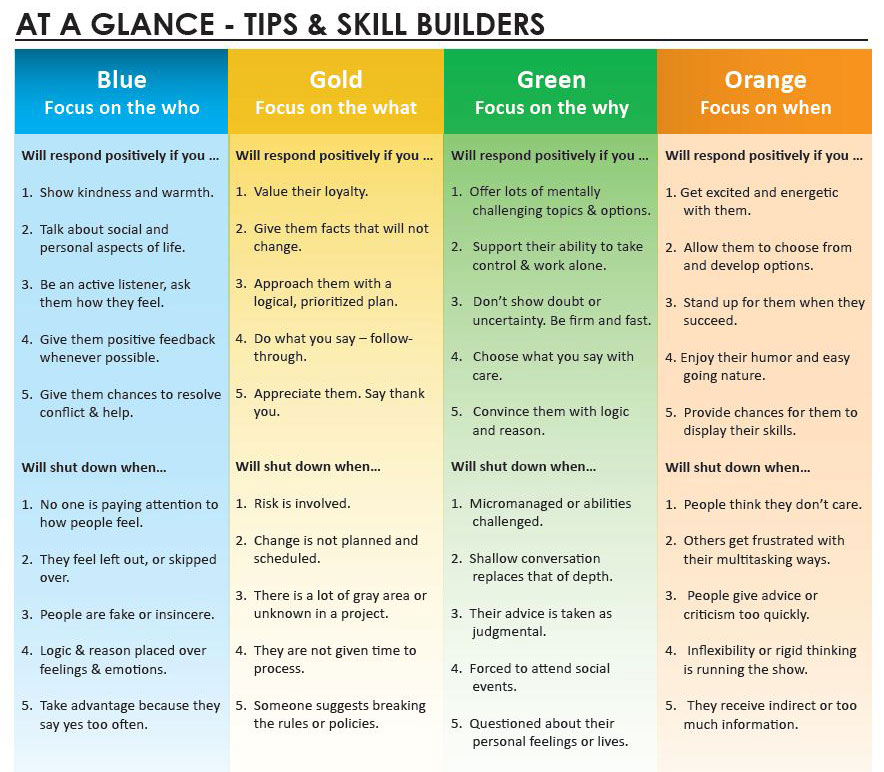Efforts in Congress to increase or alter the 18.4 cents per gallon federal gasoline tax have fizzled, tied up in a broader debate over a comprehensive transportation bill. Republicans remain opposed to increasing the gas tax, which hasn't changed since 1993, and President Barack Obama did not include an increase in his long-term plan for the nation's infrastructure.
A coalition of the business community, the transportation industry and ordinary taxpayers just trying to get to work every day drove the tax increases in the states. A widely circulated report from the American Road & Transportation Builders Association, which listed tens of thousands of "structurally deficient" bridges in each state, helped fuel the efforts.
One of the bridges the report highlighted was the Arlington Memorial Bridge, which links the Lincoln Memorial to Arlington National Cemetery across the Potomac River. Several lanes of the bridge were closed in May, and thousands of tour buses were prohibited from the span because they exceeded the bridge's new weight limit.
Many state lawmakers around the country are still haunted by the collapse of the I-35W Mississippi River Bridge in Minneapolis in August 2007, which killed 13 people and injured 145. The National Transportation Safety Board found the bridge supports had deteriorated and could not bear the weight of heavier modern vehicles. The same construction is found at thousands of other bridges, the report said.
States with GOP governors and legislatures which raised gasoline taxes include Georgia (Gov. Nathan Deal), Idaho (Gov. C.L. "Butch" Otter), North Carolina (Gov. Pat McCrory), South Dakota (Gov. Dennis Daugaard) and Utah (Gov. Gary Herbert). In Iowa, Republican Gov. Terry Branstad worked with a split legislature to raise the gas tax. Kentucky Gov. Steve Beshear, a Democrat, also collaborated with a split legislature to scale back to 1.6 cents a planned 5.1 cents per gallon gas tax cut triggered by falling gas prices.
In Nebraska, the nonpartisan but conservative legislature overrode Republican Gov. Pete Ricketts' veto and enacted an increase of 6 cents per gallon, which will be rolled out in stages starting in January 2016.
Georgia Press
Georgia, where Republicans dominate, stands out. Republican Gov. Deal laid the groundwork last year for a tax increase to pay for infrastructure, commissioning a state study on the subject and bringing together the leaders from the House and Senate. At the start of the legislative session, Deal and House and Senate leaders called for a tax hike at the Chamber of Commerce, earning its support. Deal led the way, despite having signed the "no tax" pledge promoted by Washington anti-tax activist Grover Norquist.
Georgia increased its gasoline tax by about 6.7 cents per gallon on July 1. Significantly, future increases will take into account inflation and fuel-efficient cars, two of the biggest problems with the per gallon approach to taxing gasoline. The new Georgia law imposes a $200 annual fee on electric vehicles (to compensate for the minimal amount of fuel they require) and levies an extra $5 a night fee on hotel and motel stays dedicated to transportation needs. It also assesses an annual weight-based fee on trucks that ranges from $50 to $100. The extra taxes are expected to raise $1 billion a year.
"Here in Georgia, we've reached the point where current resources are not enough to preserve and maintain the infrastructure that is vital to businesses, current and prospective, and families all over the state," said Merry Hunter Hipp, a spokeswoman for the governor. "This influx of funds will allow the state to maintain the roads and bridges that we travel on daily to get to our jobs, schools, homes and grocery stores — an investment that the governor feels that we can all support."
Norquist's Americans for Tax Reform group railed against the increase. Paul Blair, state affairs manager for the group, said raising taxes "is what legislators and governors do because they don't have the willpower to cut spending elsewhere."
"If transportation is a state priority, it should be funded first in the budget, not last," he said. "Gov. Deal did violate his personal written commitment to Georgia taxpayers in pushing for and signing a gas tax hike on consumers. Those same consumers rejected a sales tax increase for transportation projects back in 2012 by a 61-39 margin, so he should know better."
But former state Rep. Jay Roberts, a Republican who Deal recently appointed as the planning director for the Georgia Department of Transportation, said voters have learned much since then. Roberts said he doesn't worry about the tax pledge or Norquist's group.
"I don't need somebody in Washington, D.C., telling me what to do in Georgia," he said. "If he [Norquist] wants to fix something, fix what's wrong in Washington."
Roberts gave several reasons why he and the other state leaders were able to sell the tax hike to constituents: The tax hadn't been raised since 1971; it had diminished in value because it was not indexed to inflation; concern over crumbling roads and bridges was widespread; and business and industry supported the increase.
To make the case to his former colleagues in the legislature, Roberts put together a folder for each one that listed the deficient bridges in his or her district. That blueprint could be used in many other states, according to John Weingart, associate director of the Eagleton Institute of Politics at Rutgers University in New Jersey.
"Transportation is one of the few issues that hit everybody," Weingart said. "It's where the work of government is visible to everybody."
New Jersey discussed transportation needs this year, and officials said the state's transportation trust fund was "about to go bankrupt," Weingart said. But that dire prediction was later revised, giving state leaders another year to grapple with the problem.
Inflationary Argument
In several states, pointing out that the gas tax hadn't been raised in many years proved to be a powerful argument. According to a May survey by the Institute on Taxation and Economic Policy, 20 states have gone a decade or more without an increase in their gas tax rate, 15 states have gone two decades or more, and five states (Alaska, Oklahoma, Mississippi, South Carolina and Tennessee) have not seen an increase since the 1980s or earlier.
In Utah, gas taxes hadn't been raised in almost 18 years before Gov. Herbert signed a bill in March, passed by the GOP-controlled legislature, which raises the existing 24.5 cents per gallon gas tax by 5 cents. The measure also ties future increases to inflation, with a ceiling of 40 cents per gallon. Despite complaints from opponents that the state has a surplus in its budget and shouldn't be raising taxes, Herbert successfully argued, as he said in his signing statement, that "a strong transportation infrastructure has played a critical role in our economic growth and it will continue to do so thanks to this bill."
Marty Carpenter, Herbert's spokesman, said the tax hike "made the necessary changes needed to invest in a critical component of our state's economic development." He said the treasury has enough money for current projects, but would fall $11 billion short of the state's long-term transportation needs.
In South Dakota, then-Republican candidate Daugaard ran for governor in 2010 on a "no taxes" pledge. But when he ran for re-election in 2014, Daugaard had altered that stance. "If you vote for me again, I'm not committing to not raising taxes in transportation," he said, noting that the gas tax had not kept up with inflation.
The bill Daugaard signed in March includes a gas tax increase of 6 cents per gallon, a 1 percent increase in motor vehicle excise tax and a 20 percent increase in license plate fees. Perhaps throwing a bone to drivers in the mostly rural state, the bill also increased the speed limit on the state's interstate highways to 80 mph.
"There has been very, very little unhappiness expressed to me," Daugaard said. "In fact, there's been much more mail saying, 'That's the right thing to do, we need roads.' "
In Iowa, Republican Gov. Branstad signed a bill in February increasing the state's fuel tax by 10 cents per gallon. Before then, the tax was 21 cents for regular gasoline, 19 cents for ethanol-blended gasoline and 22.5 cents for diesel. State officials said each penny of the hike would raise $23 million annually.
And in Idaho, Republican Gov. Otter signed a bill increasing gas taxes by 7 cents per gallon, even as some GOP lawmakers said 7 cents wasn't enough and urged a 10 cents hike. Otter said the 7 cent increase would raise about $95 million, allowing the state to begin addressing its backlog of transportation projects. Idaho hadn't raised gas taxes for almost a decade.
"I think the view here is that nobody likes raising taxes, especially this governor in this state, but as the governor has said on numerous occasions, 'deferred maintenance is deficit spending,'" Otter spokesman Jon Hanian said.
Still Trying
Some states are still working on increasing taxes to pay for highway and other infrastructure projects, though efforts in other states never made it to the finish line.
In Washington, the legislature just sent Democratic Gov. Jay Inslee a $16.1 billion transportation funding plan that would raise the state's gas tax by 7 cents per gallon starting Aug. 1 and another 4.9 cents on July 1 of next year, with the bulk of the money going to road construction, repair and maintenance.
In Michigan, voters in May soundly defeated a ballot measure that would have hiked the overall state sales tax one point to 7 percent, removed the general tax from gasoline sales and replaced it with a higher excise tax on fuel to raise about $1.3 billion for road construction.
But Republican Gov. Rick Snyder has not given up on getting a tax bill through the legislature. The House and Senate have passed separate bills that would increase gasoline and diesel taxes to help raise $1.4 billion or more a year. The two bills, which vary considerably, would have to be reconciled later this summer before being sent to Snyder to sign.
In South Carolina, a gas tax increase that was twinned with an income tax cut failed to make it through the session. Lawmakers had said they could possibly find $150 million in the upcoming budget to give to counties in a one-time distribution tagged for road repair. But transportation advocates said that would not have been enough. Republican Gov. Nikki Haley has said she would veto any transportation tax plan that didn't coincide with a reduction in state income taxes.
In Wisconsin, Republican Gov. Scott Walker's nascent presidential campaign is coloring transportation tax discussions. Rather than raise taxes and risk being labeled a "tax-and-spend" candidate, Walker has proposed authorizing $1.3 billion in bonds for transportation. But going into debt has not been well-received by Republicans in the legislature. The legislative battles have pushed back Walker's official candidacy announcement.
In Minnesota, site of the infamous Interstate 35 bridge collapse, the governor and legislature also failed to agree on a transportation and tax bill during the regular legislative session, though the issue could resurface in a special session later this year. Democratic Gov. Mark Dayton had proposed a tax increase.
http://www.pewtrusts.org/en/research-and-analysis/blogs/stateline/2015/07/06/transportation-trumps-no-taxes-in-many-states 




![]()
![]()








